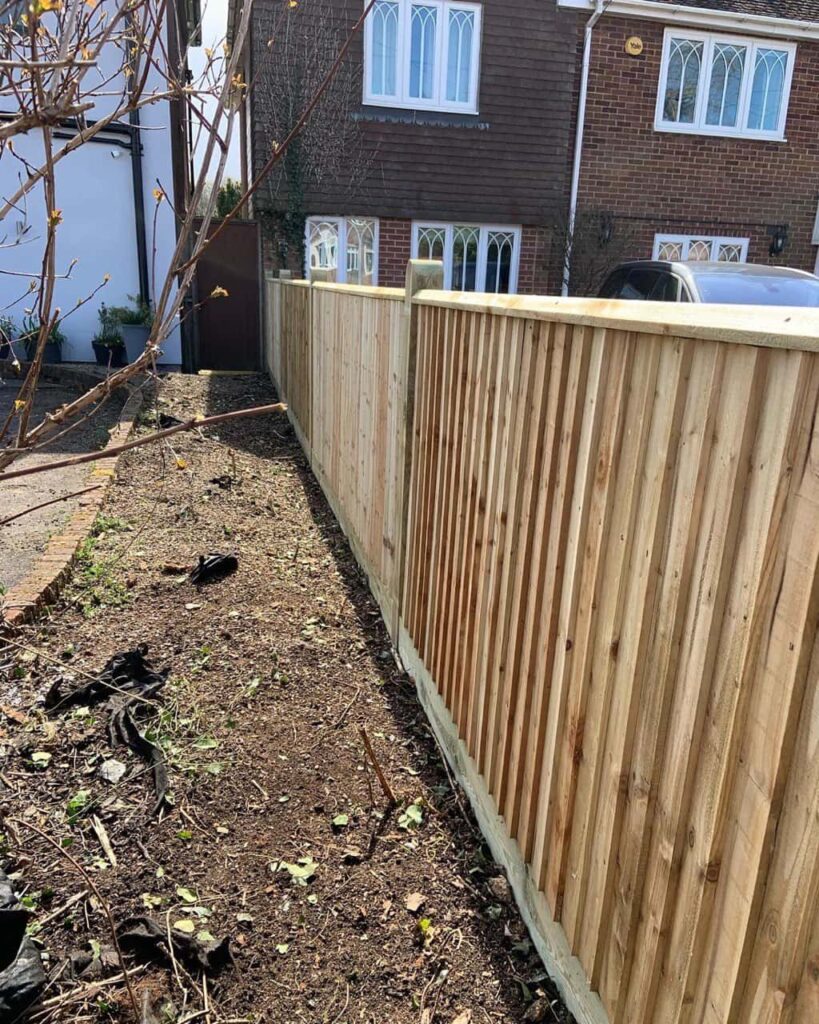How to Replace Damaged Posts Without Removing the Entire Fence
Fence posts are the backbone of any fencing structure. They provide stability, keep panels aligned, and ensure that the entire fence stands firm through years of exposure to the elements. However, over time, these posts can weaken, rot, or break due to weather, ground movement, or simple age. While many homeowners assume this means replacing the whole fence, that’s not necessarily the case. At Fast Fix Fencing Biggen Hill, we often repair or replace individual posts without disturbing the rest of the fence — saving both time and unnecessary effort while restoring full strength to the structure.
Why Fence Posts Fail Over Time
Before addressing the replacement process, it’s important to understand what causes posts to deteriorate. The most common issues include:
- Rotting at the base due to constant exposure to damp soil.
- Ground movement or frost heave, which can loosen the post.
- Wind damage, especially in exposed areas like Biggen Hill.
- Insect damage or fungal growth weakening the timber.
- Impact from vehicles, garden machinery, or falling branches.
When one or two posts fail, the integrity of the entire fence line is compromised — panels may lean, wobble, or even collapse in heavy winds. Replacing only the affected posts is often the most efficient solution.
Assessing the Damage
Before starting repairs, a professional inspection can help determine whether the problem lies with the post itself or the surrounding structure.
Signs a post needs replacing include:
- The fence leans or moves when pushed.
- The post is cracked or split along its length.
- You notice decay or softness at the base.
- The concrete footing is loose or crumbling.
If these issues are limited to one or two posts, the rest of the fence can likely be saved with targeted replacement.
How to Replace a Fence Post Without Removing the Whole Fence
Replacing a single post might sound challenging, but with the right tools and method, it can be done efficiently and safely. Here’s how the process works.
1. Support the Fence Panels
Before removing the damaged post, it’s essential to stabilise the fence panels it supports. Props or temporary braces can hold the panels upright while the faulty post is replaced. This step ensures that nearby sections remain in place and undamaged during the process.
2. Detach the Affected Post
The damaged post is carefully detached from the panels and rails while keeping them aligned. In many cases, the old fixings can be removed and reused if they are still in good condition, though professionals often recommend replacing them with new galvanised fittings for better durability.
3. Remove the Old Post and Footing
Depending on the condition of the original installation, the post may have been set in concrete or directly into the soil. When concrete is involved, the old base is broken up and removed to make space for the replacement. This ensures a solid foundation for the new post and prevents the issue from recurring.
4. Install the New Post
A new post is set in place, ensuring it matches the height and alignment of the rest of the fence. The post is levelled carefully and secured with fresh concrete or a post-repair spike.
At Fast Fix Fencing Biggen Hill, we often use modern repair spikes or sleeves where appropriate, allowing us to install new posts quickly without disturbing large sections of the fence or digging excessively.
5. Reattach the Fence Panels
Once the new post is set and secure, the fence panels are refitted and fastened in place. Proper alignment is checked to ensure a straight, stable finish that blends seamlessly with the rest of the fence line.
6. Finishing Touches and Protection
Finally, the new post is treated with a quality preservative to resist future rot and moisture. If the rest of the fence is weathered, the post can be stained or painted to match, maintaining a consistent appearance across the entire boundary.
Preventing Future Fence Post Problems
While even the strongest posts will eventually wear down, regular maintenance can help prolong their lifespan.
Here are a few simple tips to help keep your fence posts in top condition:
- Inspect your fence regularly, especially after storms or high winds.
- Keep soil and plants away from the base of posts to prevent trapped moisture.
- Apply wood preservative every few years to guard against rot and decay.
- Ensure good drainage around the base so water doesn’t collect after rain.
- Act early — repair leaning or loose posts before the issue spreads.
These preventative measures can save considerable time and expense in the long term.
Why Professional Help Matters
Replacing a fence post may seem like a straightforward task, but ensuring the fence remains stable and properly aligned requires skill and precision. Incorrect installation can lead to uneven panels, poor drainage, or recurring movement issues.
Fast Fix Fencing Biggen Hill has extensive experience in repairing and reinforcing fencing across Bromley and the surrounding areas. Our team uses professional techniques and high-quality materials to ensure your repaired fence looks great, performs well, and lasts for years to come.
Conclusion
Replacing damaged fence posts doesn’t have to mean starting from scratch. With the right approach, you can restore your fence’s strength and appearance without the hassle or cost of replacing the entire structure.
Whether your posts have weakened from age, weather, or ground movement, Fast Fix Fencing Biggen Hill provides professional solutions to repair and reinforce your fence efficiently — helping homeowners across Biggen Hill and Bromley maintain secure, attractive boundaries all year round.
Call us on: 01689 663 195
Click here to find out more about Fast Fix Fencing Biggen Hill
Click here to complete our contact form and see how we can help with your fencing needs.

